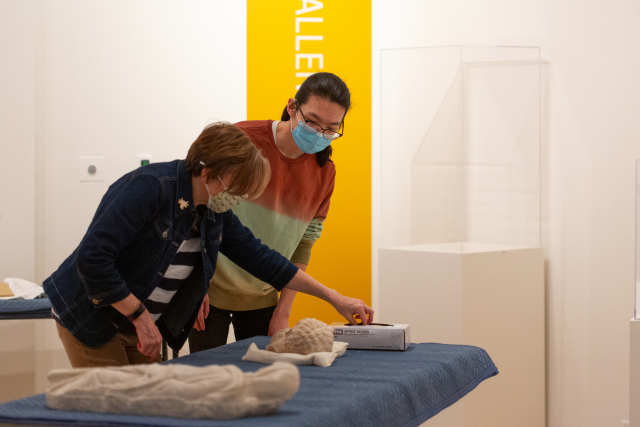As it is today, fashion in ancient Rome was a reflection of both personal and collective identity. It visually communicated a person's rank, profession, social status, and wealth, while serving as an important vehicle for self-expression. The broad expanse of the Roman Empire—which by 100 CE extended from Britain to Armenia and encompassed most of North Africa—also had a significant impact on Roman fashion, both in terms of styles and materials. Choices of fabric, clothing styles, jewelry, and even hair and beard styles sometimes reflected local traditions or paid homage to current fashions made popular by the imperial court in Rome.
This exhibition is the result of an exciting partnership between the Eskenazi Museum of Art and the College of Arts and Sciences at Indiana University. As part of the college's ASURE (Arts and Sciences Undergraduate Research Experience) Program, a select group of undergraduate students participated in the art history course From Concept to Exhibition: Creating a Modern Display of Ancient Fashion. This course provided students with the opportunity to explore the history of ancient Roman fashion through the hands-on process of organizing a museum exhibition from initial concept to final installation. Guided by Professor Julie Van Voorhis in the Department of Art History and Juliet Graver Istrabadi, the museum's Curator of Ancient Art, the students selected and researched artworks on display in this exhibition and in the main gallery and they explored ways to present their work to the general public. Staff from different departments at the museum assisted the students in developing, marketing, and interpreting the exhibition.
The Arts and Sciences Undergraduate Research Experience (ASURE, College of Arts and Sciences) supports courses that introduce students to hands-on research as early as possible in their academic careers. ASURE classes emphasize mentorship and project-based learning.
The Kimberly and John Simpson Center for Education at the Eskenazi Museum of Art supports the production and discovery of academic and creative work that engages with the practice and theory of teaching museums. Programs and courses supported by museum staff focus on art museum learning, museum art therapy, and curatorial studies.



